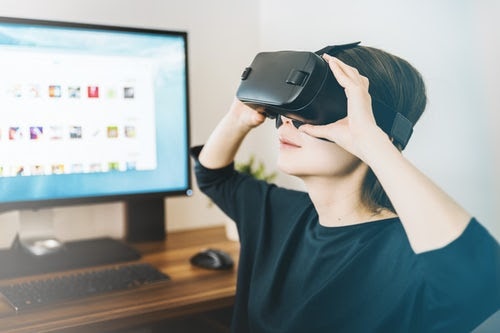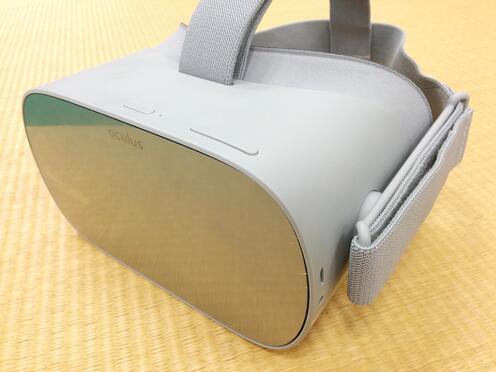Perhaps you’ve seen those plastic headsets that you put your phone into and get to play around with virtual reality apps. Perhaps you have even purchased and played around with one. If so, it is likely that you found it initially thrilling, but found that the thrill faded. Before we can get started talking about why VR is not a passing fad, we have to distinguish between a proper VR experience and those cheap experiences your phone provides you.
VR Requirements

Most phones are not suitable to provide the ideal conditions for VR. Until the Samsung Gear and Google Daydream virtually no phone could come close. There are several key features to provide a pleasant VR experience.
The first set of features relate to comfort level. Very fast screen refresh rates and high-resolution motion sensors are required to make sure that what your eyes are seeing matches what your brain expects them to see. If either of these is not up to snuff, your vision will appear to lag behind your head movement, causing a feeling of nausea similar to motion sickness. This problem can lead to people who have only used cheap gear to have a negative experience in VR that is not indicative of where the technology is, much less where it is going.
The second set of features apply more to realism. Larger, PC-connected headsets can feature significantly more realistic graphics, which leads to more immersive experience. Positional head tracking on these devices will also take into account the position of your head as you lean forward or sway to the side. In addition to just tracking rotation, resulting in a much more realistic and less limiting experience inside the headset. VR is here to stay, and this is why.
Oculus Go

Until recently, if you wanted a proper entry-level VR experience without the need for an expensive gaming PC, you had to rely on the aforementioned Samsung Gear or Google Daydream headsets. Both of these options required a specific phone to make it run. If you did not have the phone then it the device, like not having high end gaming PC, is not available to you.
The release of the Oculus Go, a standalone VR headset that meets the strict requirements that Oculus has set for VR experiences, has changed that. For significantly less than the cost of a high-end phone, you can now have a quality mobile VR experience. Having a quality, yet affordable, VR solution will help to help to drive interest in the technology forward as the higher end models improve to provide ever more immersive experiences to users.
VR Applications
Virtual reality has an advantage that many new technologies do not benefit from. It does not depend on consumer sales to be a success. This does not mean that it will not become a huge consumer phenomenon, however. Quite the opposite. As VR technology finds a market outside of homes, it will be able to sustain itself as prices on the required hardware come down, technology improves, and VR becomes the device of the everyman instead of just the early adopter. Many new devices do not have this luxury, they live or die in the consumer market.
There are a variety of uses for VR outside of the home. Researchers have shown that VR increases our ability to remember what we’ve learned over traditional presentation methods. Not only is this a great reason for you to consider a headset for your home that your child (or you) can use to aid in learning, but also offers a huge opportunity for schools to allow kids to go on virtual field trips. Children will be able to see the things they are learning about in a way they never could before. In fact, companies such as ClassVR are already making that happen. And, of course, services like our own are offering venues and other businesses the perfect solution to create the content for those virtual field trips.
VR rides such as Battle for Eire at Busch Gardens and VR arcades also promise to bring the wonders of virtual reality to the masses, and no doubt, help to drive those consumer sales as people look to repeat those experiences at home. As more and more companies see the draw the VR brings, the number of installations such as those will only increase.
Market Research Future is a firm that tracks information technology markets. In their recent report, they found that VR software has captured the market in a significant way. Driven by both consumer and investor spending, VR is finding applications in a wide variety of industries. From playing games at home to doctors diagnosing patients to graphics artists plying their trade, VR has a solution for all of them and more.
Takeaway

When the first commercial, PC-Connected headsets came out, only the top of the line desktop PCs were powerful enough to meet the heavy demands for the massive frame rates required to provide the smoothest experience. As display technologies allow for more dense resolution and the high-end graphics processing power of today becomes the average processing power of tomorrow. The kind of top quality high-end VR experience that now requires significant expenditures will be available to everyone.
And that is only the start of the way in which VR is going to improve in the future. New methods of tracking, such as the eye tracking mentioned earlier, will make the experience more and more realistic, new input methods will allow us to walk around and interact with our virtual worlds in a way that is much more realistic than what is imaginable today. So many companies are working on such a wide array of technologies to improve our virtual experiences that we are essentially looking at the 13-inch black and white TVs of VR and as we move towards the 4k UHD flat screens of the future. Contact us at Concept3D to have us help you keep your company up to date.

